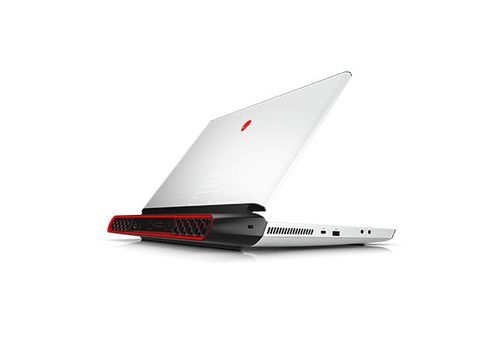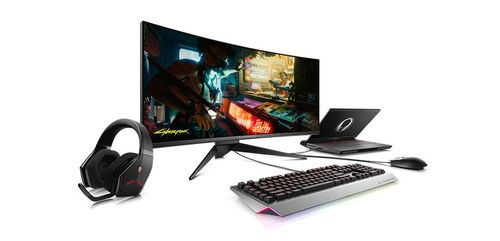Back then, desktops were king. They’re the only ones powerful enough to run the latest games. The only problem was that they were too bulky to carry. Nowadays, LAN parties are a thing of the past but portability remains as a requirement for some gamers especially for those who both work and play on their machines.
Gaming laptops were supposed to be the answer but those things come at a premium that doesn’t really give gamers a decent return on investment. Its longevity takes a massive hit mostly because of its lack of upgradeability. Each year triple-A titles upgrade their spec requirements, gamers have had to upgrade their laptops as well. If you don't have the cash to burn, then you're stuck playing last year's games or this year’s game at minimum settings. No serious gamer wants that.
Some enterprising gamers turned to DIY eGPUs to upgrade their GPUs when they’ve become outdated. It’s a great invention that gives new life to aging systems. It also comes at a minimal cost, especially when compared to the inflated costs of a new gaming laptop. Pretty soon, manufacturers caught up and made their own. It’s now a booming segment for the gaming community. The industry is quite honestly coming to its own in 2019 because even some of the biggest names in tech such Apple with their Blackmagic have started to come aboard. Their prices have started to come down and luckily, after the Bitcoin meltdown, even GPU prices came down as well. This makes eGPUs all the more in-demand for gamers looking to play the latest games.
There’s just one problem; it defeats a laptop’s purpose. It’s no longer in a form factor that you can fit in a single laptop bag. Upgradeability, it seems, comes at the price of portability.
The Area 51m strikes a balance between portability and upgradeability by through the power of modules. It's got the upgradeability of a desktop in the form-factor of a laptop. It's a gamer's dream laptop albeit for some caveats.
Form-Factor
It is a laptop through and through. It has the familiar hinge at the base that reveals the built-in monitor. Below that monitor are excellent keyboards with RGB backlighting. There are ports at the back and on the sides of the base where you can plug in your gaming peripherals.
You can find massive air intakes at the bottom and the sides of the device for proper cooling. That’s something gamers should take into consideration when buying a laptop because gaming is notorious for burning up your system. The equally massive vents at the back are also great for gamers as the hot air isn’t blown into their faces like other laptops.
Hardware
It's a full-specced laptop with a Core i9 processor and an RTX graphics chip which are both overclockable. You can rest assured that you can play the latest games with any of the configurations of the system. Furthermore, knowing that you can upgrade them later on when newer chips can be even more comforting to a lot of gamers.
The screen is a 17.3-inch FHD screen clocked at 60Hz. All of this would be a bit underwhelming for gamers who are used to 4K and 120Hz. Going for the top end model would get you the ultra-quick 144Hz monitor that’ll definitely get you more kills on fast-paced FPS games. For what it’s worth, the 1080p rendering would only help the GPU and CPU combo to perform at their best at native resolution. The beefier GPU and CPU combo that the 144Hz version, on the other hand, can definitely cope with the additional load.
When it comes to storage options, the options are pretty standard. For the most inexpensive model, you have a 1TB HDD with an 8GB SSD cache. You can opt for faster and bigger storage that goes all the way up to 2TB SSD.
It’s perhaps only in the battery department that the Area 51m lags behind its competitors. Whichever version you get, Dell is only rating the battery to only 45 minutes of gaming use. You’d definitely have to bring a charger everywhere with you.
I/O
Even against other gaming laptops, the Area 51m is at the top of its game when it comes to connectivity.
For wireless connectivity, it’s got a Killer Wireless 1550 2x2 AC that ensures a great stable Wi-Fi connection. The Bluetooth 5.0, on the other hand, is compatible with the best speakers and gaming headphones out in the market today. It’s even able to connect to multiple devices at the same time so you can get surround sound Bluetooth audio by using a few speakers paired to the laptop.
The port selection is excellent too. It’s got a Thunderbolt 3 USB-C, 3 USB-A ports, 1 gigabit RJ-45 ethernet, 1 HDMI 2.0, and a proprietary Alienware Graphics Amplifier port. All of these ensures that you can plug in all your peripherals and more without the need for a dongle.
Upgradeability
There’s no doubt that it’s a great gaming PC out of the box but the upgradeability factor is something that will make sure that that statement holds true even after a few years.
The only problem with that is that Dell is making the modular upgrades to it proprietary. In essence, you wouldn't be able to buy graphics cards for it from other manufacturers. This is because, in order to fit the desktop-level GPU, the company has had to make a few tweaks to the form-factor.
A Well-Balanced Gaming Laptop for Years to Come
Some gaming laptops sacrifice GPU power for portability, some compromise screen quality, but all of them sacrifice upgradeability. The Alienware Area 51m is the only one that doesn’t. It’s the only truly future-proof laptop that can ensure that you can game on max settings for years to come.


